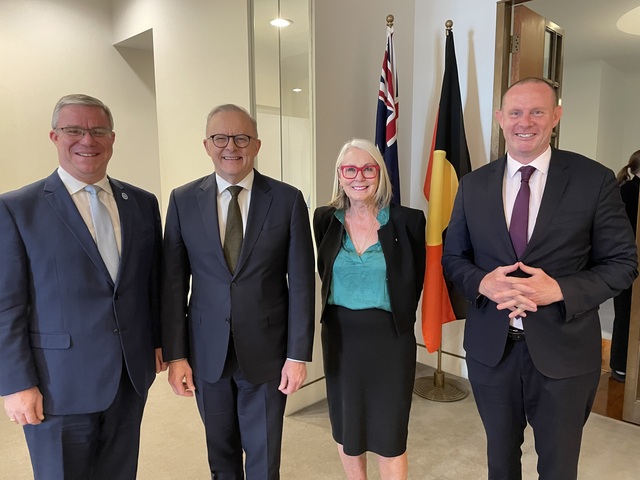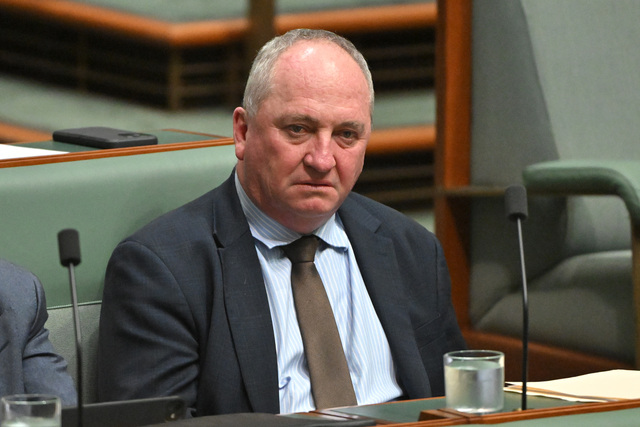30 Victorian councils have access to $240 million in low interest loans after the Local Government Funding Vehicle (LGFV) issued Australia’s first municipal bonds.
The LGFV, established by the Municipal Association of Victoria (MAV), sees Victorian councils able to borrow $240 million in five and seven year fixed-rate interest only loans.
The loans offer councils a more competitive rate than traditional bank borrowing, and are expected to be released annually, or once a minimum volume of $100 million is achieved.
An ongoing interim facility has been put in place by the MAV, where councils can access competitively priced short-term loans from the Commonwealth Bank, which will be consolidated and issued to the market as bonds when they are released.
Cameron Spence, Manager Commercial Services at the MAV, said the program so far has been a fantastic success.
“The figure we have been quoiting is that there is $100 million that could be saved across the sector.”
Mr Spence said councils not currently part of the deal are benefiting as well, as it places pressure on other lenders.
“The highest council saving reported was 45 basis points.”
The program was developed by the MAV following Victorian councils being required to pay a $396.9 million shortfall to the Local Authorities Superannuation Fund defined Benefit Plan following an actuary review by the scheme’s trustee Vision Super.
The Defined Benefit Superannuation Taskforce was established and looked at potential savings for local government, which resulted in the development of
the LGFV.
“60 councils expressed interest in participating in the initial release, and from that we took 30.”
Mr Spence said that councils need to continue to support the program.
“Local Councils can sometimes take the path of least resistance, however they need to keep sustaining it otherwise it will fall over.”
The MAV developed the program in partnership with Ernst and Young, the National Australia Bank (NAB), the Commonwealth Bank and Linklaters Allens.
NAB Executive General Manager for Debt Markets Steve Lambert, said the program is a revolution in municipal finance.
“Until now local government lending was the preserve of the big banks, but domestic fund managers will soon be able to invest in council debt.
“The money saved then creates an opportunity to reduce council rates and free up cash flow to reallocate to community services and infrastructure.”
Sophie Gilder, Director Debt Markets Commonwealth Bank said that the launch of the LGFV inaugural issue is a landmark transaction.
“This unique lending solution provides councils with the ability to diversify their funding sources.
“Although the issuance is an Australian first, its key principles follow established precedents for pooled funding vehicles offshore.
“From investors’ perspective, the LGFV bond issue provides the first opportunity to gain exposure to the third tier of government which has stable revenue streams, a strong institutional framework and implied government support.”
Moody’s Investors Service has assigned the Local Government Funding Vehicle an Aa2 rating, citing the stable and very strong credit quality of the participating local councils as well as the credit enhancement mechanisms included in the LGFV’s structure.
Moody’s also noted that participating councils will not cover each other’s payments in case of need, and uncertainties remain regarding the resolution mechanism under the Victoria Local Government Act in the unlikely event of a
council default.
These factors resulted in the slightly less than perfect rating.
Councils that have been part of the initial release of the Municipal bonds have already recorded savings.
Buloke Shire Council’s Deputy Mayor, Leo Tellefson, said Council’s $7 million loan has been a positive step forward in efforts to improve Council’s financial position.
“Council applied for the loan funding via the Municipal Association of Victoria (MAV) inaugural Local Government Funding Vehicle (LGFV).
“This initiative provided the potential for Council to obtain cheaper loan borrowings.
“The LGFV sources funds in the wholesale bond market rather than from banks.
“Council’s existing bank loan borrowings are at a rate of 5.5 percent and initial advice from the MAV indicated the borrowing rate from the LGFV could be as low as 4.8 to 5 percent.
“Accordingly, Council’s 2014/15 Budget was framed on this advice.”
The interest rate delivered to Council was 4.24 percent for the full five year loan term, over half a percent lower than expected, and amounted to annual interest saving of almost $50,000 per year.
“The successful implementation of the savings initiatives identified in Buloke’s adopted 2014/15 Budget helps Council progress towards long term financial sustainability,” Councillor Tellefson said.
“The good news of the success in obtaining the low cost borrowings via the LGFV, reflects the achievement of an important budget milestone.
“Hopefully it affords some comfort to the ratepayers of Buloke Shire, that Council is successfully implementing its clear financial plan.”
A similar funding scheme to the (LGFV) is available to New Zealand Councils, called the Local Government Funding Agency (LGFA).
Within the first six months of issuing its inaugural tender in February 2012, the LGFA issued over $1 billion in bonds after strong support from both local authorities and investors.








